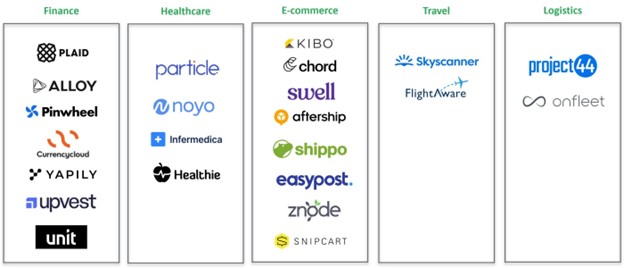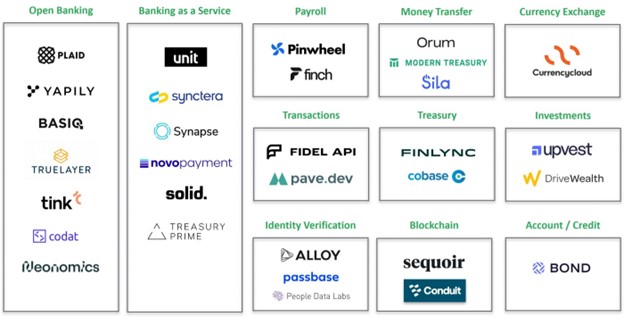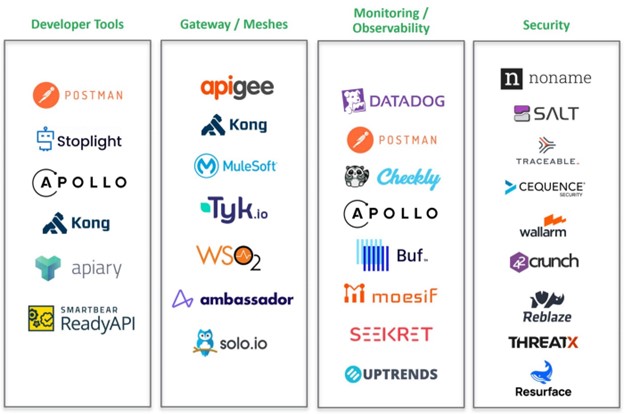APIs (or Application Programming Interfaces) are not new — REST APIs have been around since the early 2000s when companies like Amazon and eBay realized the power of making resources accessible over HTTP to their partners. When I was a developer at Cisco 15 years ago, we utilized rudimentary REST APIs for external interfaces and even some internal server / client communications.
The world has evolved significantly from those days. There are now myriads of different types of APIs including REST, SOAP, GraphQL, and Websockets. The use of APIs as external integration points is now the standard expectation. As LogRocket founder and CEO, Matt Arbesfeld attests, “When we talk to customers, they want to invest in a product with Open APIs instead of being locked into a walled garden. They want to be able to use that data throughout their other systems”.
APIs are now more critical than ever before, and the biggest step change has been driven by microservices. Microservices architectures have transformed APIs from serving as just external integration points to the foundational mesh of interaction points between both internal functions and external applications.
The concept of microservices is to break legacy monolithic applications into smaller functional blocks that can be developed and maintained independently from each other (see example below). APIs act as the standardized communication interface between these functions.
APIs - Foundational Building Blocks
Microservices Example – Slack-like Collaboration Application
One of the interesting benefits that comes from this architecture is that development teams can elect to replace some of these functional blocks with third-party standardized API-as-a-service options. For example, instead of building a functional block that sends SMS messages for example, some developers may elect to call a Twilio API. We are observing a shift where development teams are saying — if it isn’t a core function or an area of differentiation and competitive advantage, then outsource it.
As more and more of these functional blocks are replaced by API-as-a-service options, the process of building an application is being abstracted up a level leveraging a set of external API building blocks stitched together into a unified software application.
APIs have become the foundational building blocks on which the software world is being built driving faster development with lower upfront costs.
First Wave of Standardized Functions
The first and arguably most commonly used set of standardized functions has already been built — email, text messaging, video, chat, user authentication, search, and payments.
Many of the solutions above are now large, highly valued companies. They proved that API-as-a-service is a fantastic business model — highly sticky as use cases are built into the core of an application; usage driven pricing that grows with customers; and winner take most markets.
Next Wave of APIs - Vertical
This begs the question… what will the next wave of API-as-a-service companies look like?
Currently, many of the first wave horizontal API leaders listed above are being pressured by 2.0 competitors. New entrants like Finix and Gr4vy are challenging the payments incumbent, Stripe. Sendbird is facing competition from companies like Stream, Ably, and PubNub in the Chat API space. However, given how entrenched APIs become once embedded into an application, and the tendency for developers to pick best-of-breed tools, 2.0 horizontal competitors must show significant differentiation to unseat the current market leaders.
Therefore, I believe that the next wave of API-as-a-service winners will be vertical in nature.
A number of startups are emerging with API-as-a-service business models focused on the unique needs of application developers in specific verticals such as Fintech and Healthcare. There are plenty of parallels to the SaaS world where vertical SaaS solutions followed the adoption of horizontal SaaS.

The First Vertical — Fintech
The Fintech vertical is leading the pack in this regard thanks to the explosion of neobanks and fintech apps like Robinhood. While Stripe facilitates payments via API for all types of applications, some functions are unique to the needs of a Fintech application such as the integration points between banks (open banking) and money settlement.
These API-as-a-service functional building blocks are making it easier to build a fintech application today than ever before.

API Ecosystem
APIs play such an important role in the modern tech stack that a large ecosystem is rapidly growing around them. There are many categories of companies that mirror the tools originally built around traditional software.
Platforms like Postman provide a suite of tools to enable developers to design, test, document, and catalog APIs. In production, API gateways and, increasingly, meshes allow APIs to function at scale managing functions like routing, authentication, billing, and policy. Tools like Datadog and Checkly monitor APIs to ensure uptime and performance. Given that APIs provide a robust conduit into critical software infrastructure components, a number of well-funded API Security vendors are emerging to detect and respond to malicious attacks on APIs.

This large ecosystem is a testament to the elevated criticality of APIs in modern software development; a trend that should only continue with the increasing use of APIs as both (i) external integration points between applications and (ii) internal functional building blocks with a growing set of outsourced API-as-a-service options.
Are you building a next-gen API-as-a-service platform? We’d love to connect.
None of these lists are intended to be exhaustive as there are often too many players in each of these categories to list, but please let us know if there are interesting and innovative companies in the API space that we missed.
Are you building a next-gen API-as-a-service? We’d love to connect.
Get in touch

